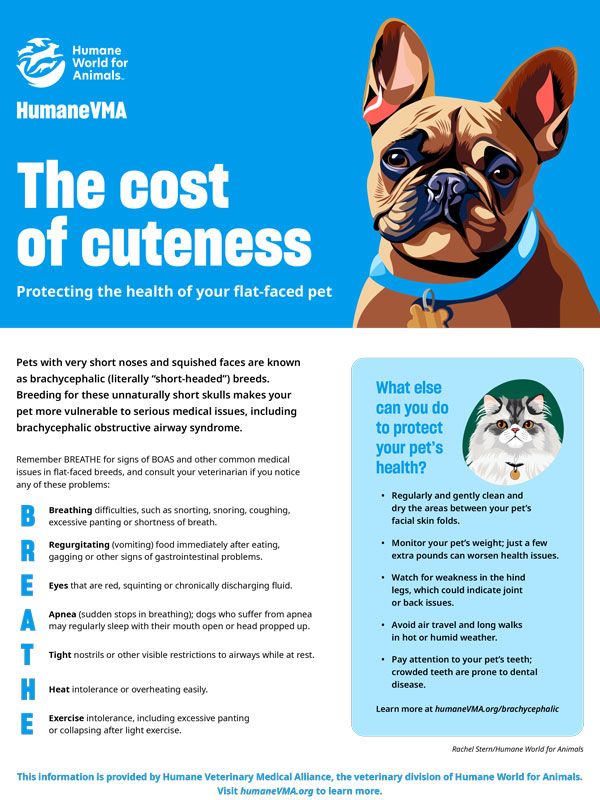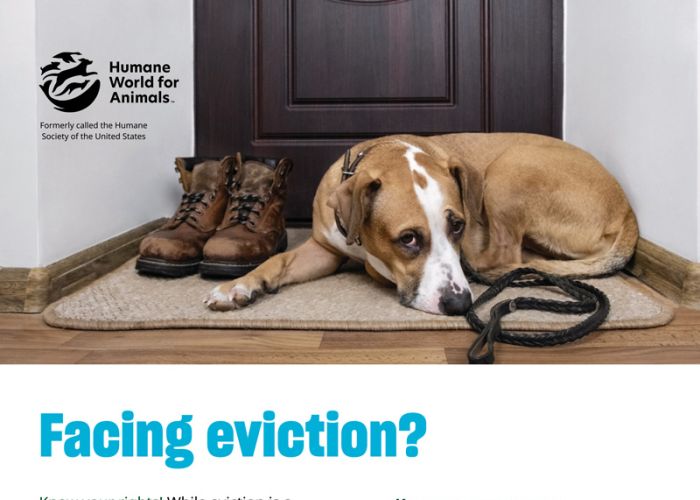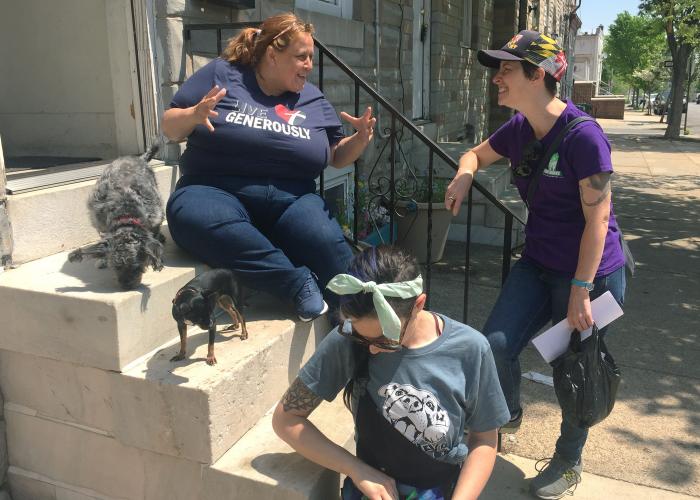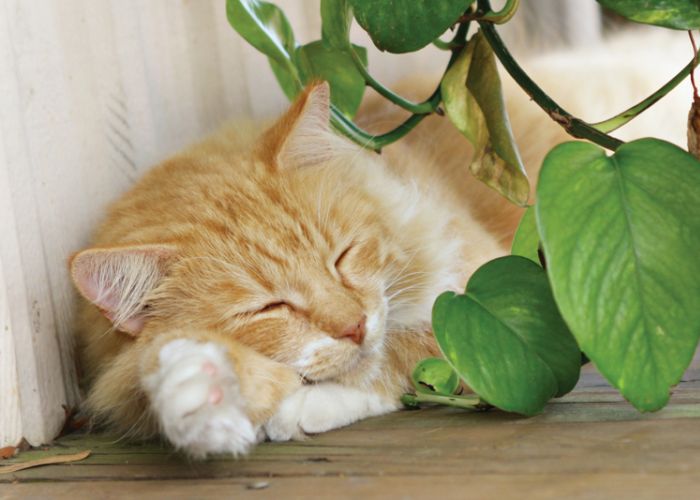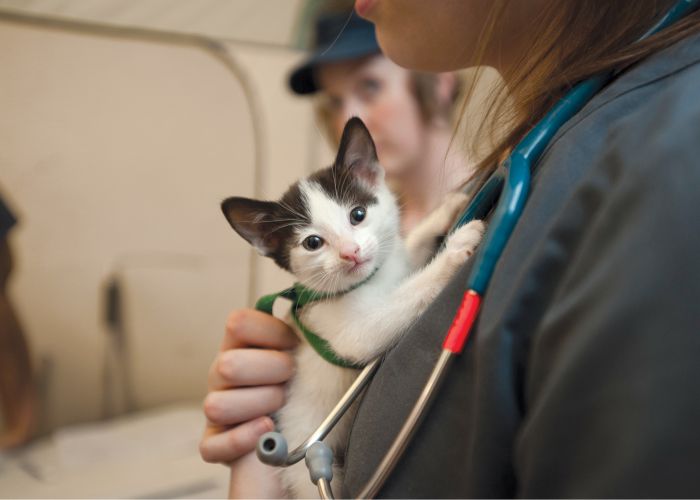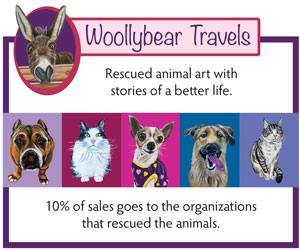Bad beauty standards
Extreme breeding practices can cause lifelong health problems for Persians and other purebred cats
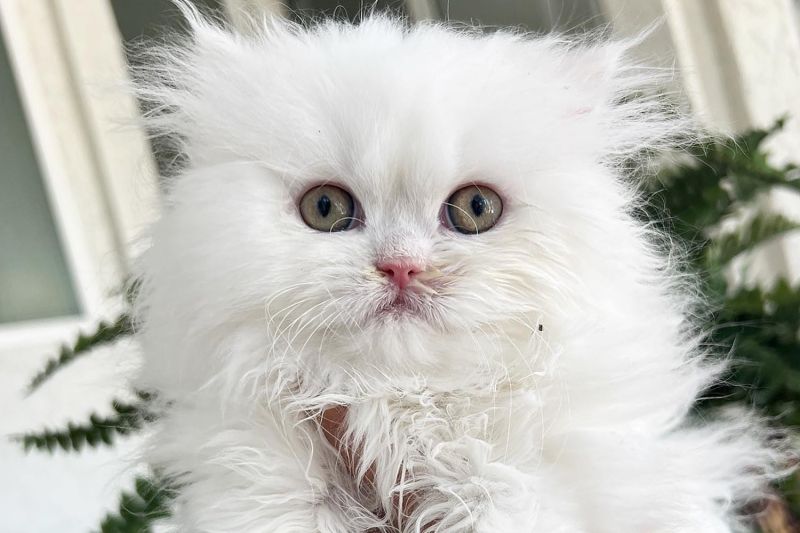
Persians have been winning hearts and blue ribbons around the world since the first cat show in England 150 years ago. Those cats, however, had little in common with today’s champions; they were simply long-haired felines with more fluff and somewhat larger, rounder eyes.
Over time, selective breeding to achieve those large eyes led to mutations in the cranium: a wider, shallower head and dramatically shortened muzzles and jaws, which quickly became the cat fancy norm. Modern show standards require that the eyes, nose and mouth in profile be in vertical alignment, with the top of the nose in horizontal alignment with the bottom of the eyes.
In other words, a face as flat as a pancake.
The medical term for this unnatural shape is brachycephalic, Greek for “short head.” Other brachycephalic cat breeds include the Himalayan, exotic shorthair, Burmese and British shorthair, all of which have Persian genes in their background. They can also share the health problems suffered by Persians, such as respiratory and heart issues, dental disease, eye and skin conditions, and more.
Despite the medical challenges that can make caring for these cats difficult and expensive, Persians and related breeds remain popular. People are drawn to their unusual faces and impressive coats, often unaware that the skeletal changes that created the attention-getting features can saddle cats with a lifetime of poor health and pain.
“When you see fancy, fluffy, purebred cats, please remember that there is a dark side—there are unseen victims of extreme gene selection. Real, living beings who deserve to be able to eat, to breathe, to walk, to jump, to play.”
—Hannah Shaw, the “Kitten Lady”
Short snouts, long medical bills
In recent years, veterinarians, animal protection organizations and other advocates have been sounding the alarm about breed standards that promote exaggerated and harmful physical traits. Much of the discussion has focused on pugs, bulldogs and other notoriously unhealthy dog breeds. But the same breeding practices also afflict many purebred cats.
Like flat-faced dogs, Persians and related breeds can struggle simply to breathe, a condition known as brachycephalic obstructive airway syndrome.
“Their nasal openings are so small that they’re basically breathing through a straw,” says Dr. Ashlie Saffire, a veterinarian and feline specialist at Faithful Friends Veterinary Clinic in Dublin, Ohio. “They have very compressed nasal bones, so they can’t move air very well. … Add that to a really short muzzle and [often] an elongated soft palate, this leads to breathing problems as well.”
While surgery to enlarge the nostrils is an option, “all it’s doing is helping a little bit of air flow,” Saffire says. “We cannot reconstruct their skull.”
The inability to breathe properly and insufficient oxygen supply have a trickle-down effect on the rest of the body. The heart works harder, and the extra effort can lead to murmurs and cardiomyopathy. Cats may tire easily, often becoming inactive and overweight.
The breed’s striking large eyes are problematic, as well. Shallow eye sockets mean the eyeballs bulge out, making them prone to scratches and chronic ulcers. Lacrimal ducts, meant to drain tears into the back of the nose, are typically kinked or even completely obstructed. The tears spill over onto the face instead, causing dermatitis around the eyes and face.
Dental problems are another serious product of the flattened skull. Shorter-than-normal jawbones can’t house the cat’s full complement of teeth, resulting in improper alignment, gum disease, decay and pain. Many Persians and related breeds have an underbite, a condition in which the lower jaw is longer than the upper one. Lower teeth protrude outside the mouth, making it difficult for the cat to eat and groom properly. Frequently, teeth must be removed to provide some relief.
Saffire sometimes sees clients who have next to no knowledge about Persians and don’t know what they’ve gotten themselves into. Some have never heard the term brachycephalic and assume their cat’s wheezing, snorting and snoring are simply normal for the breed.
But none of this is “normal,” Saffire says. “It’s normal for the breed because we created it.”
A kitten case in point

Hannah Shaw, known as the “Kitten Lady” for her work with neonatal and critically ill kittens, has saved more than 1,000 lives over her years in animal welfare. In February 2022, Shaw took on one of the toughest cases of her life, a 5-day-old white Persian who weighed only 60 grams—“shockingly small” for a kitten his age, she says.
In addition to being underweight and brachycephalic, the kitten had a life-threatening congenital defect: His palate was completely open to his nasal cavity. He couldn’t be bottle-fed due to the risk of formula being aspirated into his lungs through the opening, so Shaw would need to tube-feed the tiny cat every two hours to keep him alive. The area shelter to which the kitten had been surrendered didn’t have the resources to provide that kind of care.
Shaw made the rounds of veterinarians, seeking opinions on what could be done for the baby she’d named Chouchou, a French term of affection. None was optimistic about his chances, but Shaw wanted to try.
Over the next six months, Chouchou endured tube-feeding, the removal of his upper molars and premolars, a five-hour surgery to fix his cleft palate and additional procedures to refine the surgical site. Only after all of that was he able to eat normally. By then, Shaw and her husband had become so attached to the brave, uncomplaining kitten that they decided to adopt him.
When Shaw began documenting Chouchou’s medical journey on her Facebook page, she worried that people would fall in love with him and want to buy a Persian cat. So while celebrating his progress, she also warned her social media followers: “His story is about why no one should ever, ever support the breeding of Persian cats.”

The push for better standards
In a 2019 study of breed-related health disorders in Persian cats, researchers concluded that the adverse effects on the cats’ well-being “increase with increasing severity of brachycephalia.”
The study’s authors expressed their hope that increased education about the health problems created by extremely shortened skulls would lead to a shift in consumer preferences and breeding practices. “However, if there are not meaningful moves away from the more extreme aspects of facial conformation in Persian (and Exotic) cats…” they wrote, “specific legislation may be necessary.”
Deeming that a legislative solution was needed, several European countries have passed laws to ban or restrict the breeding of breathing-impaired dog and cat breeds. In 2024, Ojai, California, became the first U.S. municipality to ban the breeding of pets with physical traits deemed inherently harmful, including a snout length that is “less than one-third of the animal’s head from the top of its skull to the tip of its muzzle.”
The same year, New Hampshire advocates lobbied for a statewide ban on the intentional breeding and selling of animals with a “birth deformity that causes suffering, such as brachycephaly.” While the legislation failed to pass, the push against breeding pets for extreme physical traits is gaining traction.
Three years after Chouchou came into her life, Shaw continues to use his story as a cautionary tale. While his palate problems have been resolved, Chouchou still suffers from being brachycephalic. “If you look at him in profile, his face is completely flat,” says Shaw.
In January 2025, he underwent yet another surgery, this time to enlarge his undersized nostrils to improve his airflow. Malocclusion of his teeth means he will need more dental extractions.
“When you see fancy, fluffy, purebred cats, please remember that there is a dark side—there are unseen victims of extreme gene selection,” Shaw posted on Facebook. “Real, living beings who deserve to be able to eat, to breathe, to walk, to jump, to play.”
Document
